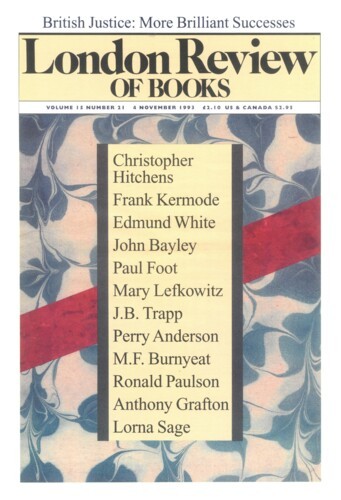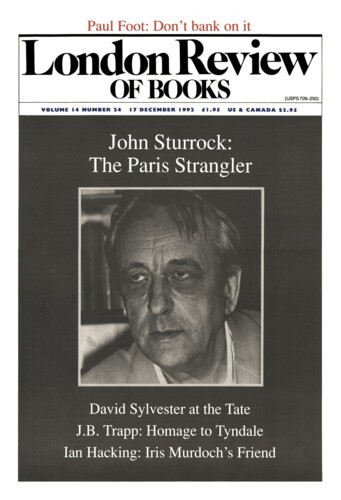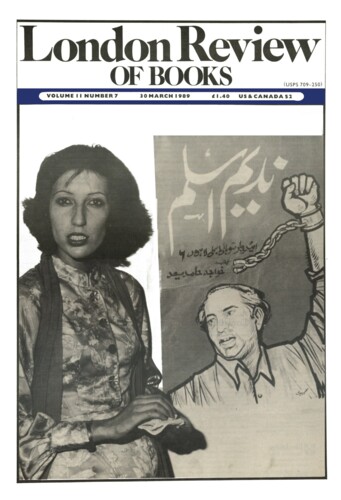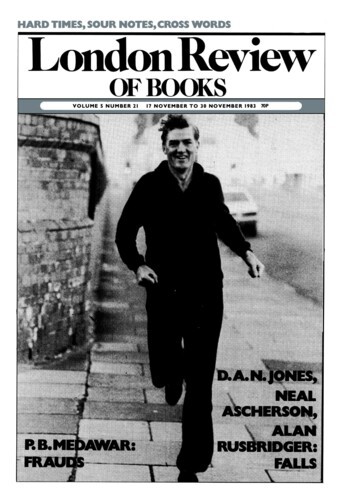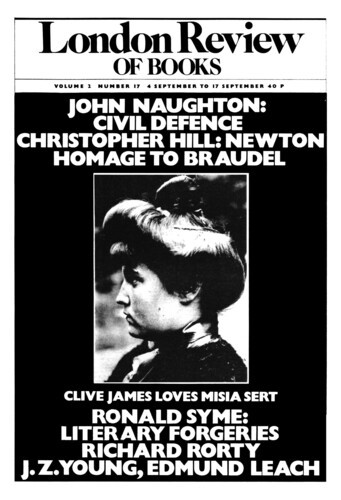The Miller’s Tale
J.B. Trapp, 4 November 1993
A Swiss Reformation woodcut shows a mill being brought back into use under the eye of God the Father. Christ is emptying St John’s eagle out of a sack into a hopper to join St Matthew’s angel, St Mark’s lion, St Luke’s ox and St Paul with his sword. They are ground into the pure flour of hope, faith and love, scooped up and bagged by Erasmus the miller under the supervision of the dove of the Holy Ghost and handed on to Luther the baker, bent over his kneading tub. The Church hierarchy refuse the product. Behind looms a peasant with his flail, while a dragon shrieks excommunication.
